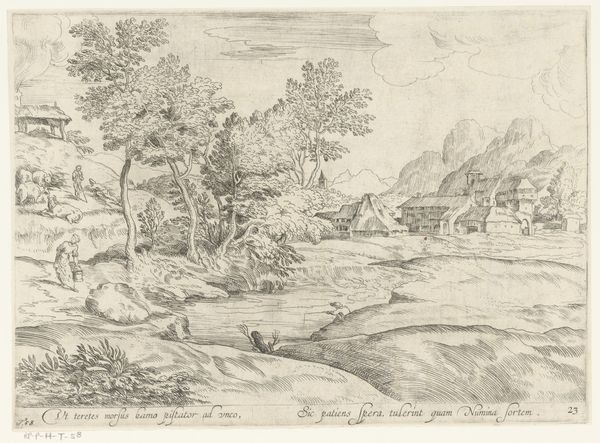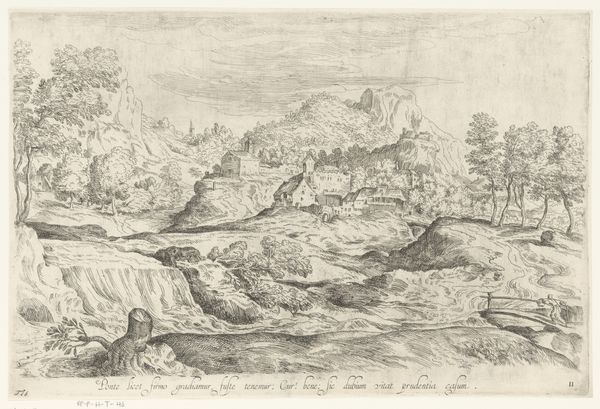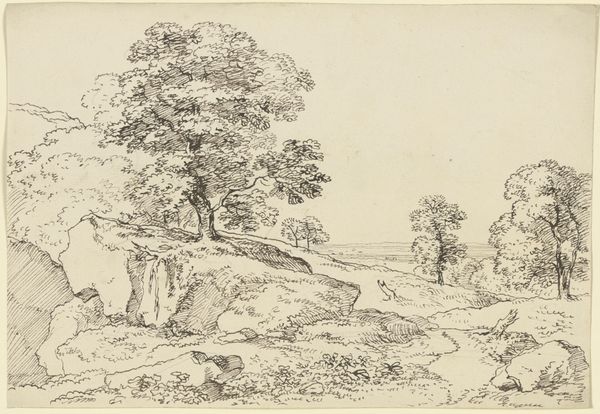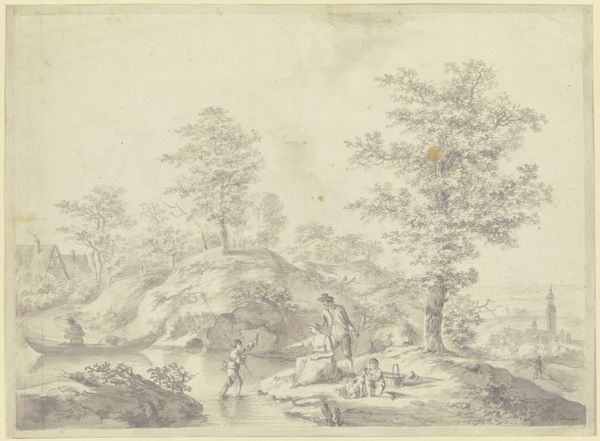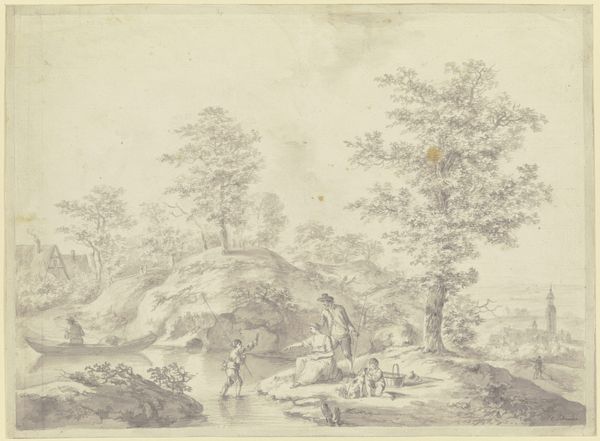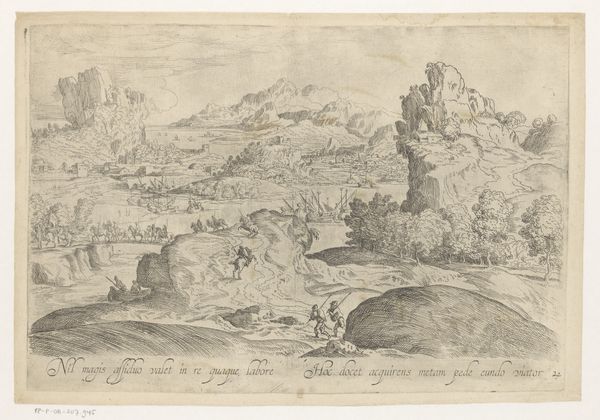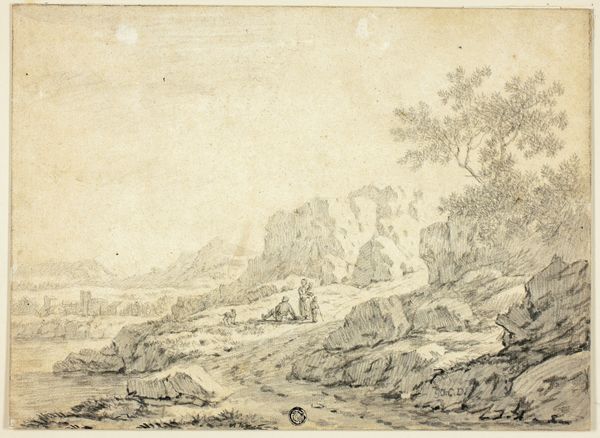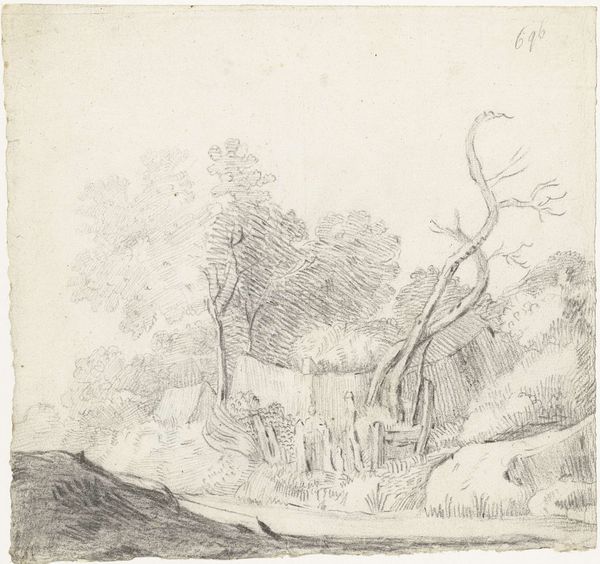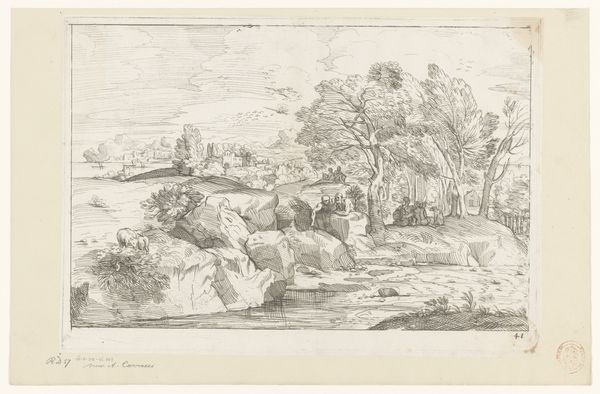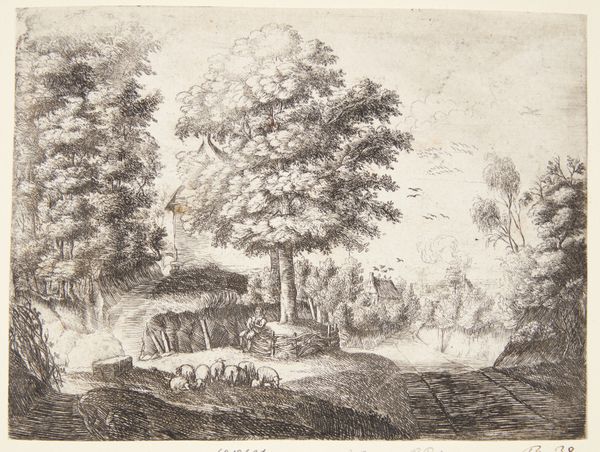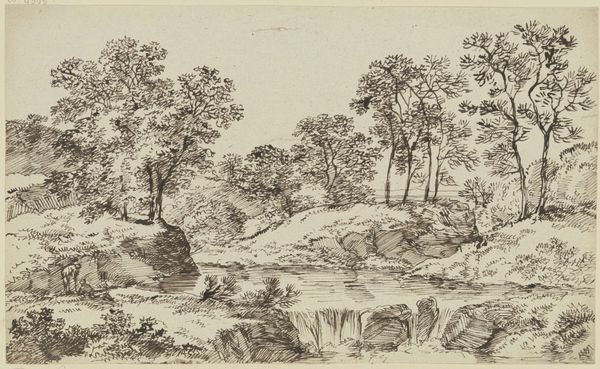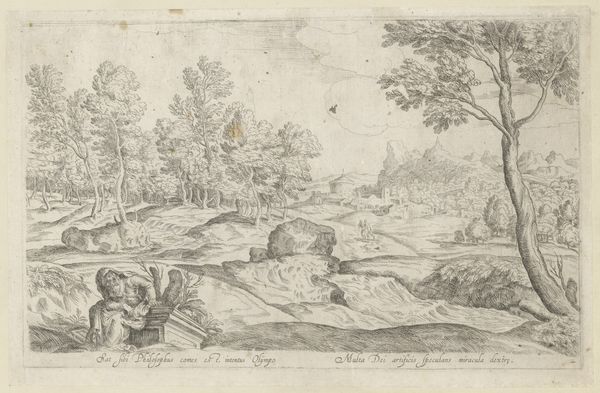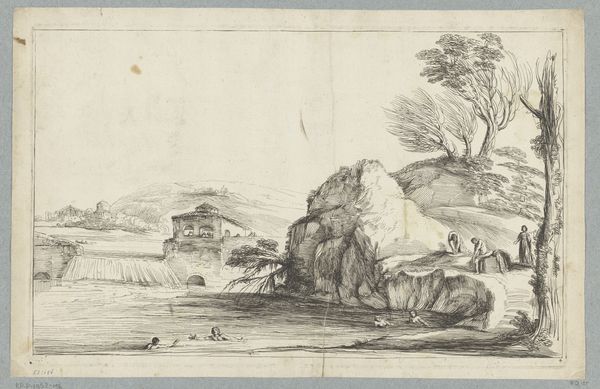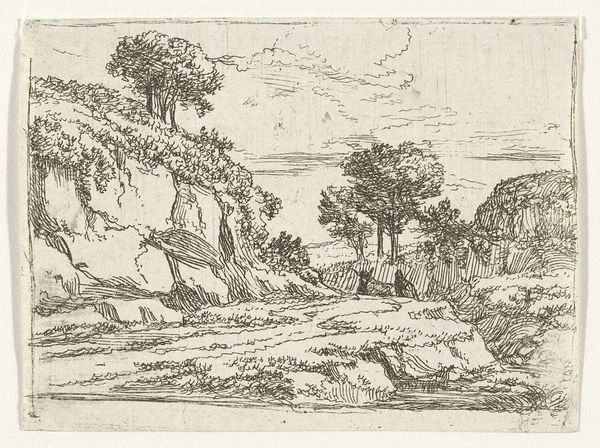
drawing, print, etching, engraving
#
drawing
#
baroque
# print
#
etching
#
landscape
#
figuration
#
line
#
engraving
Dimensions: height 260 mm, width 383 mm
Copyright: Rijks Museum: Open Domain
Curator: It strikes me immediately as so airy and yet… lonely. The delicacy of line work gives it this ephemeral quality, like a memory. Editor: We’re standing before “Landschap met herders en runderen,” or “Landscape with Herders and Cattle,” an etching dating back to around the 17th century currently residing here at the Rijksmuseum. The artist is unknown, adding another layer to its enigmatic feel. Curator: I think the choice of engraving reinforces that sense of detachment, doesn't it? You don't get the immediacy you would with, say, paint. It puts distance between us and the subject, which in itself is about a removed rural life. Where is this shepherd going, for example, and does it even matter? Editor: Exactly. Consider the socio-economic shifts of the 17th century; land, ownership, labor, and ideas surrounding rural life and its perceived purity versus the city. It speaks to those anxieties and idealized representations of the countryside. There’s this growing distance between lived reality for many, especially those displaced to urban centres, and a nostalgic agrarian past. Curator: That nostalgia, though, feels almost laced with irony. The light feels almost too bright. It flattens the image. There is a very modern detachment even from this supposedly idyllic scene. Where is the toil, the grit, of the work, where's the hardship in labour. Editor: And notice how the animals, seemingly content, become almost allegorical, representative of simple, uncomplicated lives removed from societal woes that actually were and still are, in most corners. It plays into that desire to return to nature as a solution for our problems; a powerful message with dark colonial roots if you also consider that the labor on most of those wealthy estates would come through exploited bodies across continents. The reality is obviously a world away from the picture represented here. Curator: A perfect representation of how art participates in not just reflection but construction of social meaning through the representation of social reality; that is the main tension I feel viewing this seemingly benign work. Thanks, this was an insightful exercise to unveil a hidden coloniality narrative in a work, seemingly far from it. Editor: Indeed. And now we might never look at peaceful landscape scenes quite the same way.
Comments
No comments
Be the first to comment and join the conversation on the ultimate creative platform.
